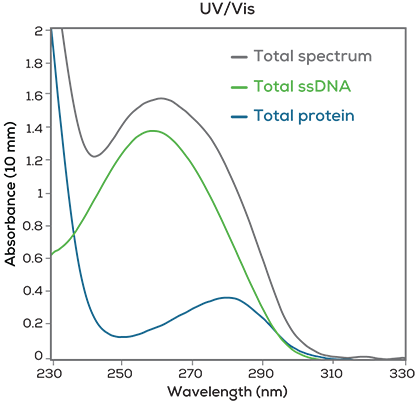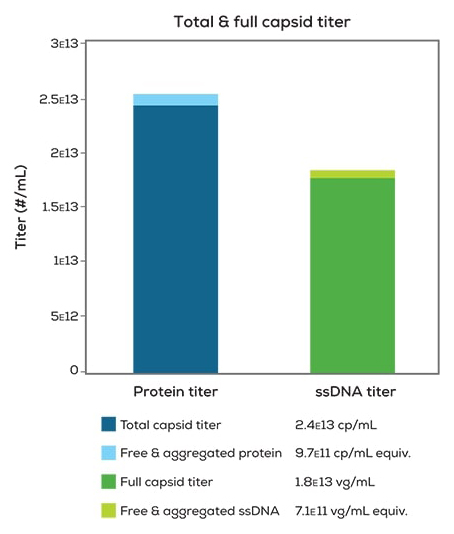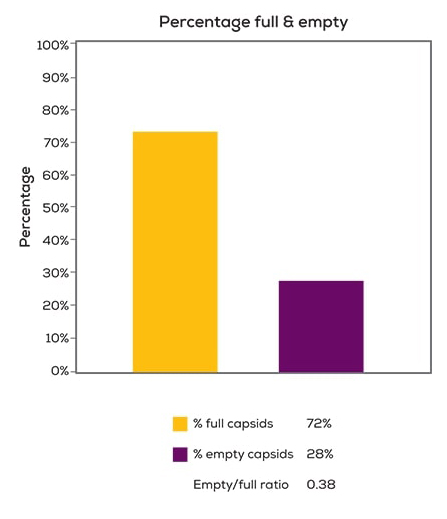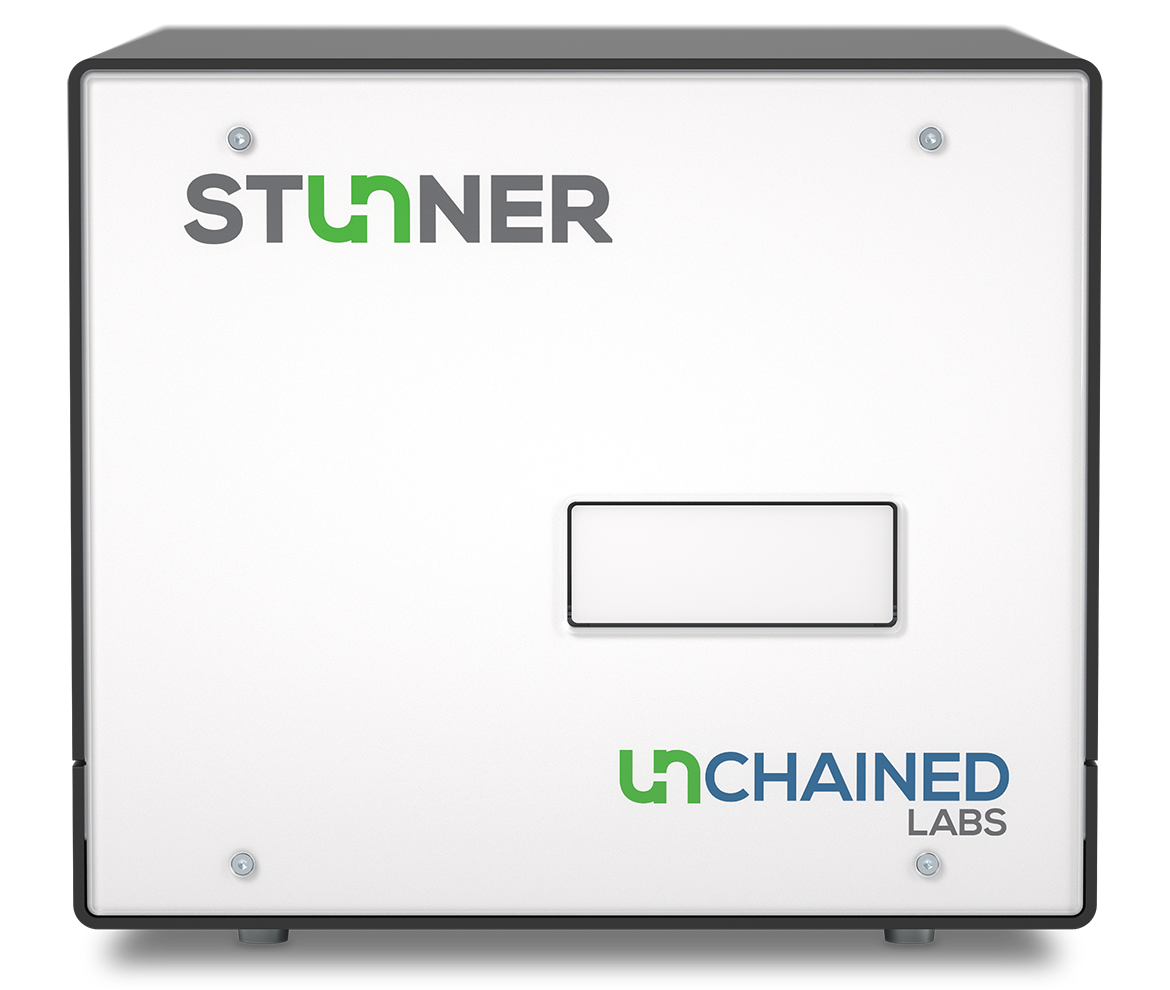AAV titer & empty/full ratio
The problem
Quick and efficient quantification of adeno-associated virus (AAV) titers and AAV empty/full ratios is a major challenge in development and manufacturing. Decisions often have to be made based on AAV titer or empty/full ratio and answers need to be fast, easy, and require minimal sample volumes.
AUC, TEM, HPLC, ELISA or PCR-based methods each give you some of the info on a sample, but none of them deliver results quickly, easily or from low sample volumes. AUC is often called the gold-standard measurement, but requires a ton of time, sample, and specialized equipment. ELISA and PCR are solid workhorse techniques but take hours and require development and optimization for each AAV vector.
The right tool for the job
Stunner is the first platform that gives researchers a full read-out on AAV titer, AAV empty/full ratio, and aggregation – in about a minute using only 2 µL. Stunner combines high-speed UV/Vis spectroscopy with static and dynamic light scattering (SLS & DLS) to measure titers down to 1E12 vg/mL and check size and aggregation of 96 samples in just 1 hour. Stunner delivers dye-free, label-free, standard-free, hassle-free quantification for any AAV serotype or gene insert.
The proof
The unique pairing of DLS & SLS with UV/Vis gives Stunner enough info to calculate total AAV titer, full capsid titer, and the AAV empty/full ratio of a sample. Stunner’s DLS reads the sample to see size and size distribution for the particles in the sample. The DLS intensity distributions help to narrow down the total intensity of light scattered to just the light scattered by AAV capsids. SLS intensity is directly proportional to the particle concentration, but since full and empty capsids scatter different amounts of light, you need more than just DLS and SLS to determine the most accurate AAV titers – you need UV/Vis data too.


UV/Vis spectroscopy sees the total amount of protein and DNA present in a sample, and the ratio of protein and DNA gives a read on the empty/full ratio for purified AAV. When Stunner combines UV/Vis with DLS & SLS results, there’s enough info to measure the scattered light from capsids, and to know how many of those capsids are likely full. That gets all the way to determining total AAV titer, full capsid titer, and the empty/full ratio of a sample. If any excess DNA or protein is seen by UV/Vis, that’s called out as free & aggregated DNA or protein in a sample.



Stunner
Stunner is the only system that pulls together UV/Vis concentration, Dynamic Light Scattering (DLS) and Static Light Scattering (SLS) data from the same 2 μL sample. Dig in to your AAV to get the total capsid titer and AAV empty/full ratio, or rack up payload concentration and size data on any nanoparticle all at once. Nail down your protein quality by knocking concentration, hydrodynamic size, polydispersity, and detection of aggregates off your list in one shot. Without skipping a beat, you’ll know if your AAV, nanoparticle or protein is good to go.
FAQs
Want more info?
Want to learn more about how Stunner gives dye-free, standard-free, hassle-free AAV titers and empty/full ratios?


